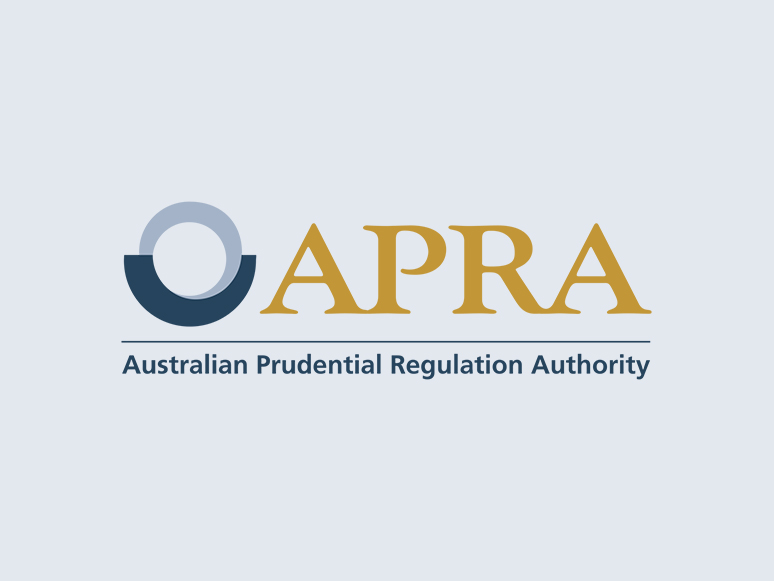logo


19th May, 2023

The Budget papers confirmed the Government’s intention to require all employers to pay their employees’ super guarantee amounts at the same time as their salary and wages from 1 July 2026. This payday super measure was originally announced by the Treasurer on 2 May 2023.
The ATO will receive additional resourcing (some $40.2 million) to help it detect unpaid super payments earlier. It is estimated that $3.4 billion worth of super went unpaid in 2019–2020.
The Government will also set enhanced targets for the ATO for the recovery of payments.
The proposed 1 July 2026 start date for payday super is intended to provide sufficient time for employers, superannuation funds, payroll providers and other parts of the superannuation system to prepare for the change.
The non-arm’s length income (NALI) provisions in 295-550 of the Income Tax Assessment Act 1997, as they apply to non-arm’s length expenses (NALE), will be amended to limit the income taxable as NALI to twice the level of a general expense for self managed super funds (SMSFs) and small APRA funds.
In addition, fund income taxable as NALI will exclude contributions to effectively exempt large APRA regulated funds from the NALI provisions for both general and specific expenses of the fund. Expenditure that occurred prior to the 2018–2019 income year will also be exempted.
These proposed changes follow industry concerns regarding the ATO’s interpretation of the NALE provisions in Law Companion Ruling LCR 2021/2, and the implications of the ruling for both APRA-regulated funds and SMSFs.
A Government consultation paper released on 23 January 2023 indicated that any proposed legislative amendments in relation to the NALE rules would apply from 1 July 2023 (following the expiry of the ATO’s transitional compliance approach for general expenses (PCG 2020/5) for the period 2018– 2019 to 2022–2023).
Currently, under LCR 2021/2, NALE of a “general nature” (eg accounting fees, actuarial costs, audit fees, investment adviser fees and compliance costs) may still have a sufficient nexus to all of the income of a fund. As a result, if an SMSF incurs a small fund expense that is not on arm’s length terms, all of the income derived by the fund (including taxable contributions and capital gains) could be taxable at 45%. The Budget changes propose to limit the income taxable at 45% as NALI to twice the level of a such general expenses.
The Government’s consultation paper (noted above) was released as part of a review to consider amendments to ensure the NALE provisions operate as intended. Although the consultation paper did not represent a settled position of the Government at that time, it proposed a factor-based approach whereby the maximum amount of fund income taxable as NALI at the highest marginal rate (45%) would be five times the level of the general expenditure breach. This would be calculated as the difference between the amount that would have been charged as an arm’s length expense and the amount that was actually charged to the fund. Where the product of 5 times the breach is greater than all fund income, all fund income will be taxed at the highest marginal rate.
A Treasury official confirmed on Budget night that the Government will proceed with the factor-based approach set out in the consultation paper but it will now adopt a two times factor (instead of a five times factor). At the current highest marginal tax rate of 45%, a maximum effective tax rate of 90% (two times 45%) will be applied to a general expenditure breach (down from the 225% originally proposed). It is expected that trustees would self-assess an arm’s length price (based on objective and supportable data) when applying this calculation method.
The Government confirmed its intention to implement superannuation tax changes for individuals with account balances above $3 million from 1 July 2025, including in relation to defined benefit schemes.
However, the Budget Papers did not reveal any further details other than to note its estimate that the measure will increase receipts by $950 million, and increase payments by $47.6 million, over the five years from 2022–2023.
Under the proposed changes, announced on 28 February 2023, individuals with total superannuation balances (TSBs) over $3 million at the end of a financial year will be subject to an additional tax of 15% on earnings from 1 July 2025. Earnings will be calculated with reference to the difference in TSB at the start and end of the financial year, adjusting for withdrawals and contributions. This means that the proposed additional 15% earnings tax on an individual’s balance above $3 million will operate on an accruals basis and include any notional (unrealised) gains and losses.
Currently, fund earnings from superannuation in the accumulation phase are taxed at up to 15%. This 15% tax rate will continue for total superannuation balances below $3 million but individuals will pay an extra 15% for balances above that amount (around 80,000 people).
In response to the Government’s consultation paper, the SMSF Association has called for super funds to be given the option of reporting “actual earnings” rather than the proposed model which would calculate earnings based on the movement in the member’s TSB, which by definition, includes “unrealised gains”. In its submission, the Association set out numerous reasons why certain amounts would need to be excluded from an individual’s TSB to avoid “earnings” being overstated under the proposed model.
The Government will provide $5 million over five years from 2023–2024 to continue a superannuation consumer advocate to improve members’ outcomes. This funding will be offset by an increase in the Superannuation Supervisory Levy administered by APRA.
In addition, the Australian Competition and Consumer Commission (ACCC) will establish the first phase of a complaints mechanism for designated consumer and small business advocacy groups to raise systemic issues under consumer law (super complaints) within existing resourcing.
11th Apr, 2023

The Australian Securities and Investments Commission (ASIC) has released results of its recent review on improving arrangements for life insurance in super funds. The review was conducted as a follow-up to issues first identified in 2019, when ASIC found that some super trustees offered insurance that unnecessarily erodes a member’s retirement balance, inappropriate coverage of insurance due to restrictive definitions and exclusions, and unreasonably onerous or lengthy claims handling processes.
To find out whether improvements had been made in the industry, ASIC used its compulsory information-gathering powers to examine the actions of 15 selected trustees. In total, approximately three million super accounts in these trustees’ funds had death and/or total and permanent disability (TPD) cover, and approximately 800,000 accounts had income protection (IP) cover at 30 June 2022. This information was further supplemented with industry-level data from the Australian Prudential Regulation Authority (APRA) and the Australian Financial Complaints Authority (AFCA) to gauge the overall level of improvement.
Overall, the report concluded that while the changes observed are a positive step towards reducing risks of members receiving insurance that does not meet their needs or paying for cover they cannot claim on, trustees need to continue improving how they monitor and respond to those risks. ASIC says it will continue to work closely with APRA to drive better practices in the super industry, and will use its regulatory powers where trustees and insurers are not complying with their obligations.
19th Dec, 2022

The Federal Government has showed its hand in terms of potential future changes to the Australian superannuation system. The Assistant Treasurer and Minister for Financial Services, Stephen Jones,
recently outlined two main areas the government will be focusing on. This includes legislating an objective for super (earmarking it specifically for use in retirement), which will then enable conversations around the taxation of super – in particular tax concessions given to high-asset self managed superannuation funds (SMSFs). The second area the government will seek to tackle is performance tests, on which work has already commenced.
From its beginnings in 1992, superannuation collectively has become a juggernaut and has grown to encompass over $3.3 trillion in assets held by an estimated 16 million Australians. That figure makes Australian superannuation the world’s third largest pension pool.
A Bill was previously introduced in 2016 that proposed to enshrine\ the primary objective of the super system in legislation: to provide income in retirement to substitute or supplement the age pension. It would have also required all new Bills relating to super to be accompanied by a statement of compatibility with the objective of the super system. This Bill lapsed ahead of the 2019 election and was never reintroduced.
Having a clear legal objective of super, the government says, will break the vicious cycle of plans to raid super such as drawing on super to pay for housing, HECS or living expenses, which have all been proposed at various stages in the past few years.
The government estimates that there are 32 SMSFs with more than $100 million in assets, with the largest SMSF having over $400 million in assets. Industry estimates also indicate that the tax concessions on a single $10 million SMSF could support 3.1 full age pensions.With this in mind, the government is looking to have a conversation around the concessional taxation of these high-asset SMSFs.
The other change the government is looking to make will stem from the results of the review into the Your Future, Your Super (YFYS) laws. The YFYS measures were initiated to ostensibly remove “unintended consequences” and keep the focus on “high performance”. A consultation paper has been released and the government has established a technical working group in addition to public submissions and stakeholder consultations.
In order to conduct the review to keep the focus on high performance, the government paused the extension of the existing Australian Prudential Regulation Authority (APRA) performance test to Choice super products for 12 months. The performance test therefore currently only applies to MySuper products, which represent around $13.7 million accounts. Super members in other types of products will not have access to the same independent APRA performance analysis unless the consultation concludes they should.
According to Mr Jones, “[t]he performance tests, conducted by APRA, must and will continue. Trustees need to be held to account because it is about ‘Your Future’. We also need to ensure members have meaningful information so that they can hold their funds to account and make informed decisions about their retirement.” Hence, it appears that the performance tests will continue in one form or another into the future, perhaps with different benchmarks.
07th Oct, 2021

This year marks the beginning of annual performance tests on MySuper products, run by the Australian Prudential Regulation Authority (APRA). The tests were introduced as part of the Federal government’s Your Future, Your Super reforms, aiming to hold super funds to account for underperformance and enhance industry transparency. The first annual test of 76 MySuper products from various super funds or registrable superannuation entities found that 13 products failed to meet the benchmark. These products will need to notify their members of the failed test and make the improvements needed to ensure they pass next year’s test.
A new interactive online super comparison tool, YourSuper, is also now available on the ATO website and via MyGov. It displays a table of MySuper products ranked by fees and net returns (updated quarterly), and you can compare up to four MySuper products at a time in more detail.
The performance tests conducted by APRA only relate to products, which are basic super accounts without unnecessary features and fees. Registrable superannuation entities usually offer multiple products in addition to MySuper products, so don’t panic if you see the name of your super fund on the list of underperforming products. However, if you see the name of your specific product or receive a letter indicating that the fund you’re in has failed the APRA performance test, it may be time to investigate the reasons why or switch to a different product.
30th Apr, 2021

Having insurance through superannuation can be a tax-effective and cost-effective way of protecting yourself and your loved ones. Most funds offer three different types of insurance through super, each covering different contingencies: life insurance, total and permanent disability (TPD) insurance and income protection insurance.
Life cover pays a lump sum or income stream to your beneficiaries when you die, or if you are diagnosed with a terminal illness. TPD insurance pays a benefit if you become permanently or seriously disabled and are unlikely to work again. Income protection insurance pays you a regular income for a specified period if you can’t work due to temporary disability or illness.
It’s estimated that around 70% of Australians who have life insurance hold it through their super fund. However, the Australian Prudential Regulation Authority (APRA) has noted new and concerning developments that may see the costs of this insurance go up.
According to the data APRA has collected on life insurance claims and dispute statistics, premiums per insured member within super funds escalated during 2019 and 2020. APRA has likened this trend to what occurred between 2012 and 2016 when, after a period of significant premium reductions, insurers experienced significant losses. This led to large premium increases and more restrictive cover terms for insurance holders.
APRA notes that should this trend continue, super members are likely to be adversely affected by further substantial increases in insurance premiums and/or reductions in the value and quality of life insurance in superannuation. The regulator goes as far as saying that the ongoing viability and availability of life insurance through super may be at risk, which will impact a large proportion of the population.
It’s not time to panic just yet, but it’s important to regularly review what insurance you actually need, what cover you have through your super, and what you’re paying for it, as premiums can add up and erode your super – especially if you’re unnecessarily paying them to multiple funds!
For now, APRA is continuing to monitor the situation to ensure that registrable superannuation entity (RSE) licensees take appropriate steps to safeguard pricing, value and benefits for members that adequately reflect the underlying risks and expected experience.
17th Nov, 2020

The Australian Prudential Regulation Authority (APRA) has published new guidance on the interaction between JobKeeper payments and satisfying the “work test” for the purpose of voluntary superannuation contributions.
Where an individual is aged 67–74 and is stood down from their employment due to the impacts of COVID-19 but is in receipt of the JobKeeper payment, APRA says a super fund trustee can accept a personal contribution from that individual under the super “work test” rules. APRA’s view is that where an employer is receiving the JobKeeper wage subsidy for an individual, registrable superannuation entity (RSE) licensees should consider the individual to be “gainfully employed” for the purposes of the “work test”, even if that individual has been fully stood down and is not actually performing work. In APRA’s view, this is appropriate because the individual is still employed and is obtaining a valuable benefit from their employer.